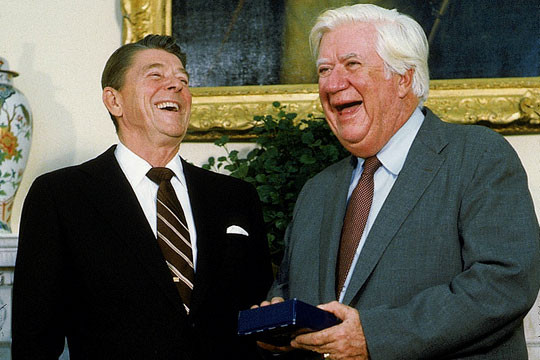It’s all about judgement.
 It’s high tide for innovation – innovate, innovate, innovate. Do it now; bring together the experts; hold an off-site brainstorm session; generate 106 ideas. Fast and easy; anyone can do that. Now the hard part: choose the projects to work on. Say no to most and yes to a few. Choose and execute.
It’s high tide for innovation – innovate, innovate, innovate. Do it now; bring together the experts; hold an off-site brainstorm session; generate 106 ideas. Fast and easy; anyone can do that. Now the hard part: choose the projects to work on. Say no to most and yes to a few. Choose and execute.
To choose we use processes to rank and prioritize; we assign scores 1-5 on multiple dimensions and multiply. Highest is best, pull the trigger, and go. Right? (Only if it was that easy.) Not how it goes.
After the first round of scoring we hold a never-ending series of debates over the rankings; we replace 5s with 3s and re-run the numbers; we replace 1s with 5s and re-re-run. We crank on Excel like the numbers are real, like 5 is really 5. Face it – the scores are arbitrary, dimensionless numbers, quasi-variables data based on judgment. Face it – we manipulate the numbers until the prioritization fits our judgment.
Clearly this is a game of judgment. There’s no data for new products, new technologies, and new markets (because they don’t exist), and the data you have doesn’t fit. (That’s why they call it new.) No market – the objective is to create it; no technology – same objective, yet we cloak our judgment in self-invented, quasi-variables data, and the masquerade doesn’t feel good. It would be a whole lot better if we openly acknowledged it’s judgment-based – smoother, faster, and more fun.
Instead of the 1-3-5 shuffle, try a story-based approach. Place the idea in the context of past, present, and future; tell a tale of evolution: the market used to be like this with a fundamental of that; it moved this way because of the other, I think. By natural extension (or better yet, unnatural), my judgment is the new market could be like this… (If you say will, that’s closeted 1-3-5 behavior.) While it’s the most probable market in my judgment, there is range of possible markets…
Tell a story through analogy: a similar technology started this way, which was based on a fundamental of that, and evolved to something like the other. By natural evolution (use TRIZ) my technical judgment is the technology could follow a similar line of evolution like this…. However, there are a range of possible evolutionary directions that it could follow, kind of like this or that.
And what’s the market size? As you know, we don’t sell any now. (No kidding we don’t sell any, we haven’t created the technology and the market does not exist. That’s what the project is about.) Some better questions: what could the market be? Judgment required. What could the technology be? Judgment. If the technology works, is the market sitting there under the dirt just waiting to be discovered? Judgment.
Like the archeologist, we must translate the hieroglyphs, analyze the old maps, and interpret the dead scrolls. We must use our instinct, experience, and judgment to choose where to dig.
Like it or not, it’s a judgment game, so make your best judgment, and dig like hell.
Pushing on Engineering
 With manufacturing change is easy – lean this, six sigma that, more with less year-on-year. With engineering, not so much. Why?
With manufacturing change is easy – lean this, six sigma that, more with less year-on-year. With engineering, not so much. Why?
Manufacturing is about cost, waste, efficiency, and yield (how to make it), and engineering is about function (what it does) – fundamental differences but not the why. The consequence of failure is the why. If manufacturing doesn’t deliver, the product is made like last year (with a bit more waste and cost than planned), but the product still sells. With engineering, not so much. If engineering mistakenly designs the Fris out of the Frisbee or the Hula out of the Hoop, no sales. That’s the why.
No function, no sales, no company, this is fear. This is why it feels dangerous to push on engineering; push on engineering and the wheels may fall off. This why the organization treads lightly; this is why the CEO does not push.
As technical leaders we are the ones who push directly on engineers. We stretch them to create novel technology that creates customer value and drive sales. (If, of course, customers value the technology.) We spend our days in the domain of stress, strain, printed circuit boards, programming languages, thermal models, and egos. As technologists, it’s daunting to push effectively on engineering; as non-technologists even more. How can a CEO do it without the subject matter expertise? The answer is one-page thinking.
One-page thinking forces engineers to describe our work in plain English, simple English, simple language, pictures, images. This cuts clutter and cleans our thinking so non-technologists can understand what’s happening, what’s going on, what we’re thinking, and shape us in the direction of customer, of market, of sales. The result is a hybrid of strong technology, strong technical thinking, and strong product, all with a customer focus, a market focus. A winning combination.
There are several rules to one-page thinking, but start with this one:
Use one page.
As CEO, ask your technical leaders (even the VP or SVP kind) to define each of their product development (or technology) projects on one page, but don’t tell them how. (The struggle creates learning.) When they come back with fifteen PowerPoint slides (a nice reduction from fifty), read just the first one, and send them away. When they come back with five, just read the first. They’ll get the idea. But be patient. To use just one page makes things remarkably clear, but it’s remarkably difficult.
Once the new product (or technology) is defined on one page, it’s time to reduce the fear of pushing on engineering – one-page thinking at the problem level. First, ask the technical leaders for a one-page description of each problem that must be overcome (one page per problem and address only the fundamental problems). Next, for each problem ask for baseline data (test data) on the product you make today. (For each problem they’ll likely have to create a robustness surrogate, a test rig to evaluate product performance.) The problem is solved (and the product will function well) when the new one out-performs the old one. The fear is gone.
When your engineers don’t understand, they can’t explain things on one page. But when they can, you understand.
Do Magical Work
 We are responsible for our actions, for what we do, for our work, and others are responsible for their response to it. (That’s why they call it responsibility.) Though we know we can’t control others, we still snare ourselves in worry trap: What will they think? Will they like it? What will they say?
We are responsible for our actions, for what we do, for our work, and others are responsible for their response to it. (That’s why they call it responsibility.) Though we know we can’t control others, we still snare ourselves in worry trap: What will they think? Will they like it? What will they say?
Worse than the worry trap, however, is when we actually change our work based on what others will think. A big no-no. We’re asked to do the work because we’re talented, we’re uniquely qualified, we’re the experts. Why do we let opinions of others wield so much power? Who cares what they say. We will let our work speak for itself.
There’s not much in life we have control over, but work is one of them. We control most everything about it: the what and how, the caliber, the tenor. We choose to do marginal work, average work, great work, or magical work. It’s our choice. We choose. When we chose to do magical work, its voice powerful enough to drown out the less capable, the politically motivated, and the CEO.
So go do magical work. Do work so good you don’t remember how you did it, so good you don’t think you could do it again, so good it scares you. But be ready – magical work, by definition, is misunderstood.
What will they say about your magic? It doesn’t matter, magic’s voice will drown them out.
The human side of Technology
 Technology has strong character traits; it has wants and desires; it plans for the future. It’s alive.
Technology has strong character traits; it has wants and desires; it plans for the future. It’s alive.
Technology continually tries to reinvent itself. And like rust, it never sleeps – it continually thinks, schemes, and plans how to do more with less (or less with far less). That’s Technology’s life dream, its prime directive – more with less. All day, every day it strives, reaches, and writhes toward more with less.
Technology needs our help along its journey. To do this we must understand its life experiences, understand its emotional state, and listen when it talks of the future. Like with a good friend, listening is important.
Technology has several important character traits which govern how it goes about its life’s work. Habitually, it likes to focus its energy on one a single subsystem and reinvents it, where the reinvented subsystem then puts strain on the others. It is this mismatch in capability among the subsystems that Technology uses to fuel innovation on the next subsystem. Its work day goes like this: innovate on a subsystem, create strife among the others, and repeat.
Technology likes to continually increase its flexibility. It feels better when it can stretch, bend, twist, and contort. It likes to develop pivot points, hinges, and rubbery algorithms that adjust to unexpected inputs and create novel outputs. Ultimately Technology wants to self-design and self-configure, but that’s down the road.
Technology likes to get into the details – the deeper the better. To do this it gets small. Here’s its rationale: small changes at the molecular or atomic levels roll up to big changes at the system level. A small change multiplied by Avogadro’s number makes for a big lever. Technology understands this.
Technology is frugal, not wasteful in any way, especially when it comes to energy. Its best party trick is to shorten energy flow paths. The logic: shorter energy paths result in less loss and a simpler product. You’ll see this in its next round of work in energy efficiency where it will move subsystems closer to each other to radically improve efficiency and radically reduce product complexity.
Technology knows where it wants to go, and has its favorite ways to get there. Our innovation engines will be more productive if they’re informed by its character.
(Special thanks to Victor Fey for teaching me about Technology’s character traits, which he calls lines of evolution.)
Learning through disagreement
 It’s a little-know fact that you can disagree and still be a team player. (Really, it’s true.) It’s okay to disagree, but it should be done effectively. (Disagreement is not argument.) And disagreement can be a great source for learning. I learn most deeply from smart people I disagree with.
It’s a little-know fact that you can disagree and still be a team player. (Really, it’s true.) It’s okay to disagree, but it should be done effectively. (Disagreement is not argument.) And disagreement can be a great source for learning. I learn most deeply from smart people I disagree with.
As a self-declared smart person, I hold my thinking in high regard. (To advance a cause confidence in your thinking is needed.) However, like with most things, there should be balance: confidence in your thinking tempered with healthy self-examination and respect for others’ thinking. There are a lot of smart people out there, people with different life experience, training, and education. Just the folks to learn from. (Different is not inferior or incorrect, it’s just different.)
It’s a struggle to get the balance right. Hold fast? Give a little ground? Change your thinking altogether? There’s no right answer, just the conviction that it’s best to move toward balance.
Trust and mutual respect are keys to our migration toward balance. Trust helps us start deep dialog. It feels safe to initiate when there’s confidence the disagreement comes from a thoughtful, unselfish place. Mutual respect keeps the dialog going – no low blows, just shared thoughts, experiences, and data.
With trust and mutual respect, healthy disagreement has time to blossom into fuller, deeper understanding – a credit to you and the important people in your life.
Coaxing out of the weeds.
 Doing new is difficult and scary. For safety, we create complexity and hide behind it; we swim for the weeds; we dive for the details. (At least we’ll come across as knowledgeable about something when we bury our heads in details.) All of this so we can look smart and feel safe.
Doing new is difficult and scary. For safety, we create complexity and hide behind it; we swim for the weeds; we dive for the details. (At least we’ll come across as knowledgeable about something when we bury our heads in details.) All of this so we can look smart and feel safe.
But with new stuff, looking smart and feeling safe are not valid. With new, we don’t know; we’re not smart (yet); there’s no reason to feel safe. (Don’t try, it’s too slow.)
It takes focus and compassion to coax people out of the weeds and help them feel safe. Focus is needed to keep the end game in mind, to constantly keep context in the forefront (why are we here?), to maintain the right compass heading (into the wind). Compassion is needed to make “I don’t know” feel safe. To start, explain the deal: “new” and “I don’t know” are inseparable, a matched set. Like your best pair of wool socks, left without right doesn’t work. If that’s insufficient, tell them if was easy you’d have asked someone else to do it.
Day-to-day, it’s difficult to maintain focus and compassion. I find it helpful to remember it’s natural to seek safety in the weeds. We all do it. Keep that in mind while you do new as fast as you can.
Improve the US economy, one company at a time.
 I think we can turn around the US economy, one company at a time. Here’s how:
I think we can turn around the US economy, one company at a time. Here’s how:
To start, we must make a couple commitments to ourselves. 1. We will do what it takes to manufacture products in the US because it’s right for the country. 2. We will be more profitable because of it.
Next, we will set up a meeting with our engineering community, and we will tell them about the two commitments. (We will wear earplugs because the cheering will be overwhelming.) Then, we will throw down the gauntlet; we will tell them that, going forward, it’s no longer acceptable to design products as before, that going forward the mantra is: half the cost, half the parts, half the time. Then we will describe the plan.
On the next new product we will define cost, part count, and assembly time goals 50% less that the existing product; we will train the team on DFMA; we will tear apart the existing product and use the toolset; we will learn where the cost is (so we can design it out); we will learn where the parts are (so we can design them out); we will learn where the assembly time is (so we can design it out).
On the next new product we will front load the engineering work; we will spend the needed time to do the up-front thinking; we will analyze; we will examine; we will weigh options; we will understand our designs. This time we will not just talk about the right work, this time we will do it.
On the next new product we will use our design reviews to hold ourselves accountable to the 50% reductions, to the investment in DFMA tools, to the training plan, to the front-loaded engineering work, to our commitment to our profitability and our country.
On the next new product we will celebrate the success of improved product functionality, improved product robustness, a tighter, more predictable supply chain, increased sales, increased profits, and increased US manufacturing jobs.
On the next new product we will do what it takes to manufacture products in the US because it’s the right thing for the country, and we will be more profitable because of it.
If you’d like some help improving the US economy one company at a time, send me an email (mike@shipulski.com), and I’ll help you put a plan together.
a
p.s. I’m holding a half-day workshop on how to implement systematic cost savings through product design on June 13 in Providence RI as part of the International Forum on DFMA — here’s the link. I hope to see you there.
The carry-over task and fear of success
 The to-do list, whether digital or analog, we’ve all got ’em. We cross things off and put things on (mostly the latter); the list evolves – it’s a living thing.We put energy into adding things, tasks, action items. (You can’t go to a meeting without collecting one of them.)
The to-do list, whether digital or analog, we’ve all got ’em. We cross things off and put things on (mostly the latter); the list evolves – it’s a living thing.We put energy into adding things, tasks, action items. (You can’t go to a meeting without collecting one of them.)
But most telling to me are the tasks that stay on week-on-week, the carry-over tasks. We never do them, but we never take them off the list. What are they? Why don’t we do them? Why don’t we just take them off the list?
For tasks we complete, the fundamental motivating force is fear, fear of not getting them done, the consequences of failure. The deal is clear: we don’t complete the task, and something bad will happen to us. We know what will happen to us if we fail, we know the consequences of failure.
But the carry-over task is altogether a different beast. It’s an uncompleted task where the fundamental motivating force is still fear, but this time it’s the fear of getting them done, the consequences of success. The deal is absolutely unclear: we complete the task, and something good will happen to us. Though, this time we don’t know what will happen to us if we succeed, we don’t know the consequences of success.
With the carry-over task, we must supply our own motivation, our own energy, to overcome the consequences of something good happening to us us. Strange, but true.
With success comes visibility; with visibility comes judgement; with judgement comes fear, fear of being un-liked. We will be seen for what we are, and we’re afraid of what people will think. Some won’t like us, and that’s scary.
The fear of success is real, and it’s a tough nut. Some many not want to crack it, and that’s okay. For those that do, consider this: today, as you are, some don’t like you, so how could success be worse? With success, at least they’ll know why they don’t like you: because you succeeded.
For innovation, look inside.
 Everyone is dissatisfied with the pace of innovation – solutions that change the game don’t come fast enough. We look to the environment, and assign blame. We blame the tools, the process, the organization structure, and the technology itself. But the blame is misplaced. It is the innovators that govern the pace of innovation.
Everyone is dissatisfied with the pace of innovation – solutions that change the game don’t come fast enough. We look to the environment, and assign blame. We blame the tools, the process, the organization structure, and the technology itself. But the blame is misplaced. It is the innovators that govern the pace of innovation.
It certainly isn’t the technology – the solutions already exist; they’re patiently waiting for us, waiting for us to find them. We just have to look. The technology knows what it will be when it grows up: the path is clear. Put simply, we must break through our unwillingness to look. We must look harder, deeper, and more often. We must redefine our self-set limits, and look under the rocks of our successes and beyond our best work.
To increase the pace and quality of innovation, we must look inside.
a
a
p.s. I’m holding a half-day workshop on how to implement systematic cost savings through product design on June 13 in Providence RI as part of the International Forum on DFMA — here’s the link. I hope to see you there.
The obligations of knowing your stuff.
If you know your shit, you have an obligation to behave that way:
Do – don’t ask.
Say, “I don’t know.”
Wear the clothes you want.
Tread water with Fear until she drowns.
Walk softly – leave your big stick at home.
Ask people what they think – let them teach you.
Kick Consensus in the balls – he certainly deserves it.
Be kind to those who should know – teach, don’t preach.
Hug the bullies – they cannot hurt you, you know too much.
Work with talented new folks – piss and ginger is a winning combination.
In short, use your powers for good – you have an obligation to yourself, your family, and society.

 Mike Shipulski
Mike Shipulski